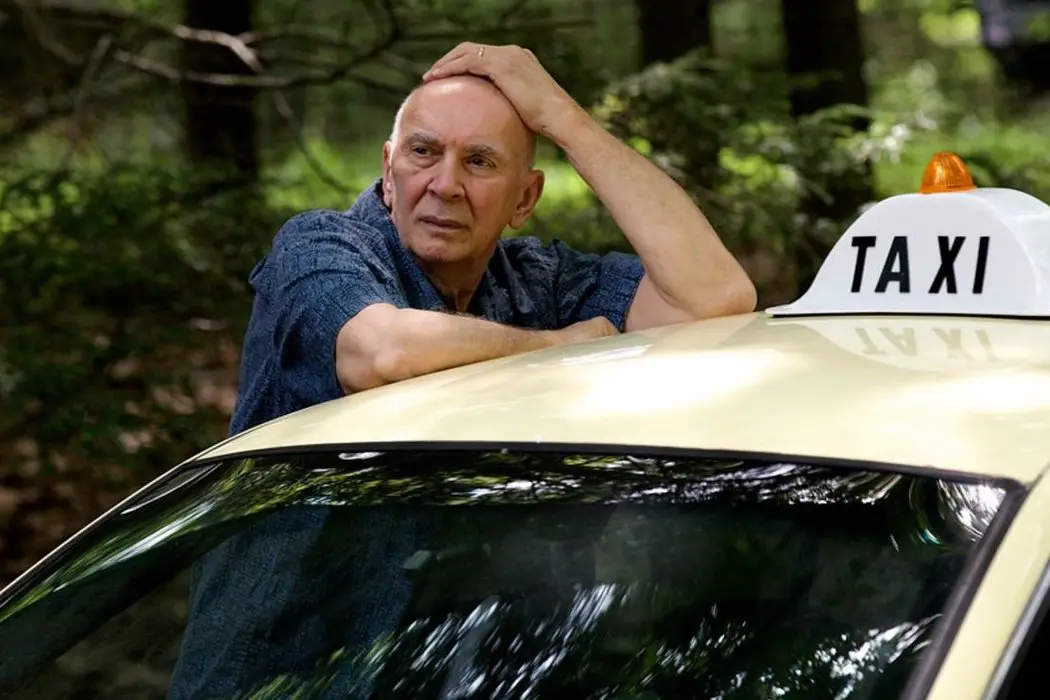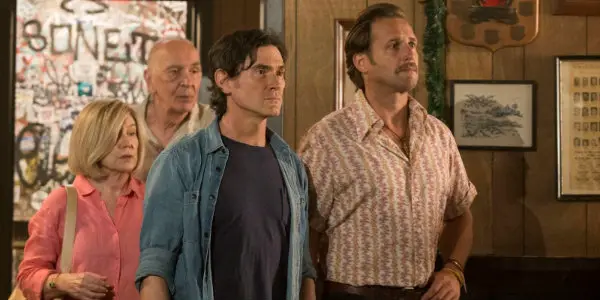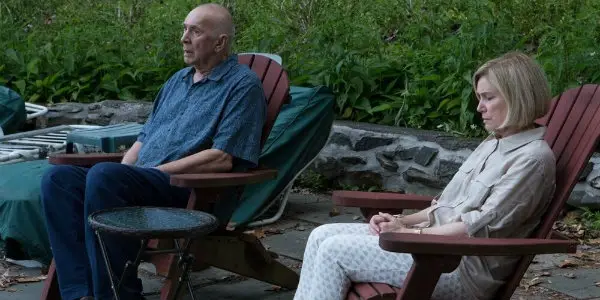YOUTH IN OREGON: The Problem Of Pain

English Major, Film Buff, and Citizen of the World, Sean…
The task of articulating and presenting the case for the right to die is tricky to say the least. Notoriously, the late physician and euthanasia activist Jack Kevorkian was the center of significant media attention and enduring controversy that has served to define his entire life and legacy. On a smaller and more populist scale, the late fantasy writer Terry Pratchett was a vocal advocate for assisted suicide throughout the twilight years of his own life after being diagnosed with early-onset Alzheimer’s disease. The legal quandaries that inevitably arise when the issue is raised in public or private has continued to be a spot of political and moral contention, resulting in a stalemate for those who wish to turn in a life of prolonged anguish for the final relief of death.
Enter Youth in Oregon – the latest directorial outing from actor-turned-director Joel David Moore – as a cinematic apology for those on both sides of the continuing argument. Starring Frank Langella as the terminally ill octogenarian Raymond Engersol determined to make his way back to his estate in Oregon in order to secure legal euthanasia, Youth in Oregon is an inherently taut drama. Billy Crudup and Christina Applegate co-star as Raymond’s dissapproving son-in-law and daughter respectively, and through their emotional admonishment of assisted suicide the viewer is able to hear both sides of the issue. There is no easy answer to what is a terrifying proposition, but through the performance offered by Langella the solution is made more approachable.

If it is the right of every man and woman to live, then the opposite is surely true, no matter how antithetical it may seem to our overriding instincts towards self-preservation. When the body begins to deteriorate at such a rate that it becomes impossible for modern medicine to keep up with the march of time, surely it is not out of the question to allow the individual in harm’s way to decide the means by which their suffering is either temporarily mollified or definitively ended. As a means by which such an argument can be made, Youth in Oregon goes a significant way towards advocating euthanasia to the mainstream.
Out, Out, Brief Candle!
Youth in Oregon opens on the Engersol family in a state of mild disrepair. Long since moved into his daughter’s family household following his initial diagnosis, Langella as Raymond leads a life of emasculated indignity. With death knocking at his door, and current treatment methods quickly becoming more and more ineffective against his illness, Raymond ceremoniously announces to his immediate nuclear unit that he has decided to make the trip back to Oregon to secure the right to die.
Upon hearing the news, the Engersols attempt to dissuade Raymond from taking action. In short order, Applegate begs and pleads for a stay of execution in order to hold onto whatever remains of her father’s biological livelihood, Crudup hedges his bets and agrees to take Raymond to Oregon in the hopes of dissuading him along the way, and Mary Kay Place shines as the ignored matriarch and widow-to-be. The road trip that shortly ensues is filled with humor, warmth, and passion, and the final destination – even as its details have been explicitly described and ascertained throughout – still manages to shock and awe in its implied ethereal significance.

The idea of God, or some other power after death, is absent in Moore‘s hands. Avoiding any easy spiritual bypass towards alleviating the problem of pain, Youth in Oregon struggles with the meaning of life by way of the importance of the people that make up the only world that is quantifiably self-evident to the senses. For some, Raymond’s disillusionment with continuing to live could be seen as a form of nihilism. For others, his bravery in the face of suffering may ring with the clarity of logic. It’s impossible to summon the pain of another human being as our own, and in Youth in Oregon that task is approached with sincerity and deference to the ones facing that problem head on.
At the end of the third act, Youth in Oregon allows the viewer into an incredibly intimate sequence that sees Raymond visiting a dying friend on his death bed. That friend has secured the right to assisted suicide. Shortly thereafter, the viewer learns that Raymond, too, has been legally approved by the state of Oregon for the same procedure. Yet this is exactly where the film largely ends its narrative trajectory. Moore takes the viewer to death’s door, opens the lock, and lets the viewer decide how much further they themselves are willing to go, thus barring any arbitrary conclusion from being reached.
Conclusion
Moore offers his viewers a lot of dense material to chew over in Youth in Oregon, and for the most part his latest film acts as a marvelous talking point for a complicated issue of civil rights. As an argument for the right to die, Youth in Oregon manages to present the issue as it might actually be faced in real life, resulting in a dramatic representation of how one might approach the issue as an active participant. It’s easy to make pronouncements regarding the legal and moral implications of taking one’s own life regardless of the personal circumstances, which is why a movie like Youth in Oregon is so refreshing in its ability to force the viewer to contend with the ethical quandary with respectful restraint.
Moore might not state how he explicitly feels about euthanasia and the people who pursue the legal right to it, but Langella goes a long way in his performance towards making the realities of such a decision more immediately approachable. The idea of ending one’s own life is a harsh reality to contend with, but having a cinematic expression like Youth in Oregon with which to approach its thorny edges is a small blessing in a life filled with pockets of such intense human pain.
What’s your perspective on the issue over the right to die? Do you think it should be a approached as a moral or a social issue?
Youth in Oregon saw limited theatrical release in the U.S. on February 3, 2017, and is currently available to rent online. Find international release dates here.
Does content like this matter to you?
Become a Member and support film journalism. Unlock access to all of Film Inquiry`s great articles. Join a community of like-minded readers who are passionate about cinema - get access to our private members Network, give back to independent filmmakers, and more.
English Major, Film Buff, and Citizen of the World, Sean K. Cureton is a born and raised Jersey Boy. Having received a B.A. in English from Rutgers University, Sean is proud to call the Garden State his home, equidistant from both the steps that made Sylvester Stallone a household name, and the park where Harry was cordially introduced to Sally, even if he’d prefer to a stay in state due to a certain fondness for a convenience store located in Leonardo, NJ. When he’s not in the multiplex, you can follow him on Twitter, @seankcureton.













